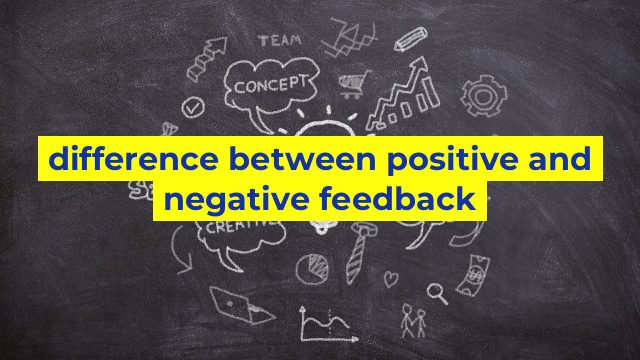The Important Distinction: Positive vs. Negative Feedback
When it comes to feedback, whether in personal or professional settings, the impact of both positive and negative feedback cannot be underestimated. Although both types of feedback have a purpose and a place in various situations, understanding the difference between the two is crucial for effective communication and building strong relationships.
Positive Feedback
Positive feedback is typically associated with praise, recognition, and affirmation. It aims to commend and encourage behaviors, traits, and actions that are desired or appreciated. Positive feedback is powerful in that it can significantly boost an individual’s confidence and motivation, resulting in continued success and growth.
In a business setting, positive feedback can help to reinforce positive work behaviors, including high-quality results, effective communication, and proactive problem-solving. Positive feedback also promotes employee engagement, loyalty, and retention, which ultimately contributes to the success of the organization.
Negative Feedback
Negative feedback, on the other hand, points out areas for improvement, highlighting areas of inefficiency, inaccuracy or ineffectiveness. Negative feedback aims to address behaviors, actions, or traits that may be causing significant problems, issues or difficulties. Although negative feedback is less desirable than positive feedback, it is a necessary tool for personal and professional growth.
In the business setting, negative feedback has a valuable role in improving employee performance and development. Although it can be uncomfortable to give or receive negative feedback, addressing areas of weakness can lead to increased productivity, better decision-making, and ultimately, better results.
The Bottom Line
In conclusion, while positive feedback and negative feedback may seem oppositional, they ultimately serve different purposes in effective communication. While positive feedback is effective for reinforcing desirable behaviors, negative feedback is critical for identifying areas for improvement. Both forms of feedback are necessary for personal and professional growth, and it is essential to know how and when to use them to ensure effective communication and positive outcomes.
Table difference between positive and negative feedback
| Feedback Type | Definition | Examples |
|---|---|---|
| Positive Feedback | Feedback that reinforces good behavior or performance, increasing the likelihood of it being repeated in the future. | A boss complimenting an employee’s hard work and productivity, a teacher praising a student’s critical thinking skills. |
| Negative Feedback | Feedback that suggests areas of improvement or highlights mistakes, in order to encourage growth and development. | A coach pointing out areas where an athlete needs to improve, a manager addressing an employee’s mistakes in order to help them learn and grow. |


